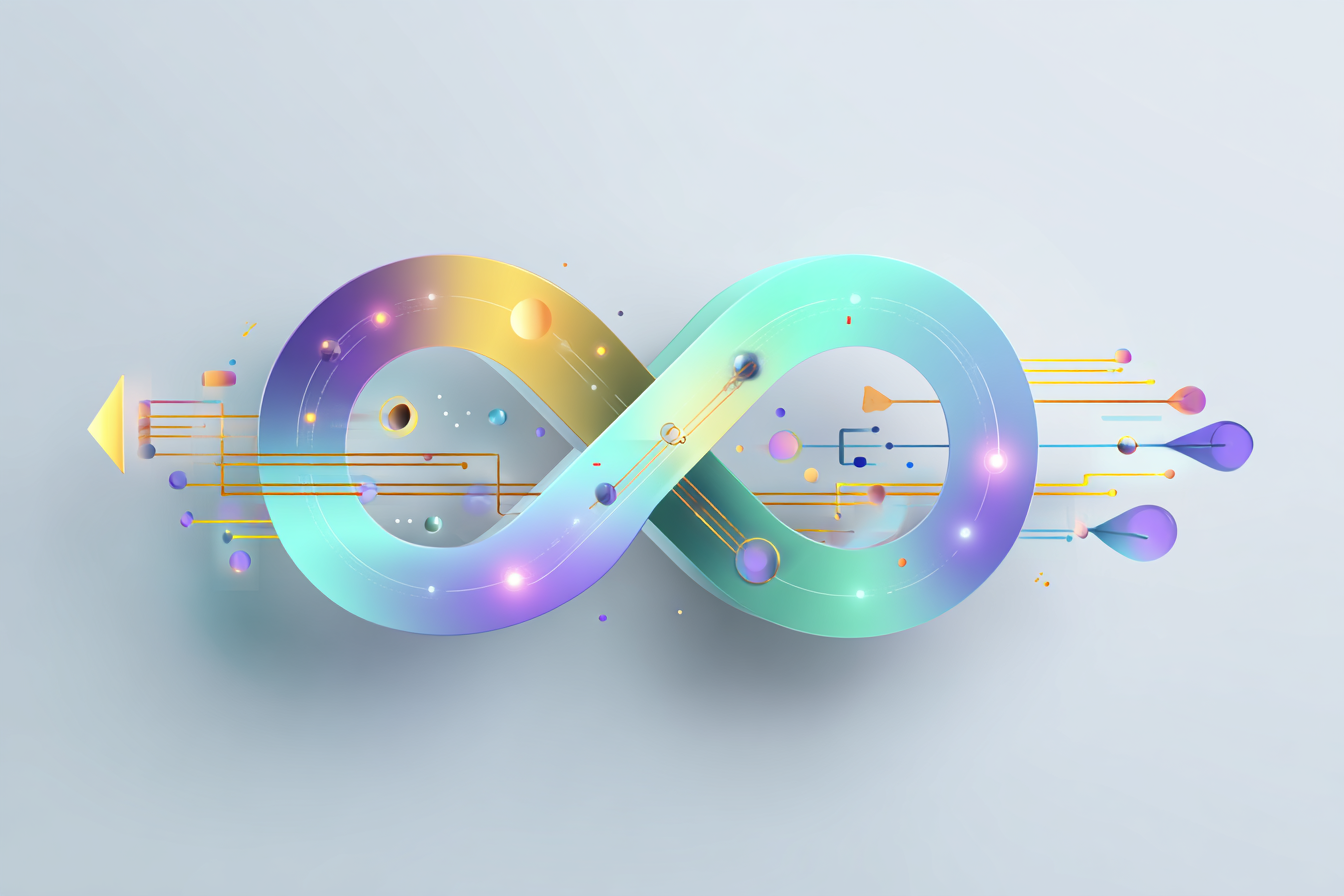Why Every Development Team Will Need Continuous AI
The same market forces that made DevOps inevitable are now driving Continuous AI adoption across the industry.

It's Tuesday afternoon, and your team is stuck in the same place they were last week. Someone is manually updating documentation that should have been changed when the API was modified three commits ago. Another teammate is writing his third iteration of the same authentication boilerplate because the AI tool gave him generic suggestions that don't match your team's patterns. The code review queue has twelve pull requests waiting because everyone's too busy with to provide thorough feedback.
Meanwhile, another development team just shipped their fourth feature this week. Their documentation updates automatically when code changes. Their AI assistant understands their specific coding standards and suggests fixes that actually work. Their code reviews happen in minutes instead of days because AI handles the routine checks while humans focus on architecture and logic.
The difference isn't talent, budget, or luck. It's approach. The first team is treating AI as a collection of individual productivity tools. The second team has implemented Continuous AI workflows that connect intelligence across their entire development process.
This pattern should feel familiar. Fifteen years ago, teams had the same divide with continuous integration and deployment. Early adopters gained compounding advantages while late adopters scrambled to catch up. Now, as Microsoft's President of Developer Division Julia Liuson puts it: "AI is now a fundamental part of how we work. Just like collaboration, data-driven thinking, and effective communication, using AI is no longer optional—it's core to every role and every level." Recent research found that 90% of engineering teams now use AI in their workflows, with 62% seeing at least 25% speed improvements.
History is repeating itself, but faster.
The DevOps Foundation That Made Continuous AI Inevitable
DevOps automated the mechanical aspects of software delivery: building, testing, deploying, and monitoring applications. It created reliable, repeatable processes that could scale across teams and projects. The result was faster, more predictable software delivery.

Continuous AI automates the intelligence aspects of software development: understanding context, making suggestions, adapting to patterns, and learning from developer feedback. It creates intelligent assistance that can operate across the entire development lifecycle. The result is more efficient, more consistent software development.
Here's where they intersect and diverge:
The teams succeeding with Continuous AI aren't replacing their DevOps processes. Adding Continuous AI to their workflow layers intelligent assistance on top of their existing automation infrastructure.
Why 2026 Represents the Tipping Point
While 84% of developers use or plan to use AI tools, The state of AI reports that only 21% of organizations using gen AI have fundamentally redesigned workflows around it.
This gap represents potential for growth in organizational support, but also indicates that companies who haven't integrated AI into their workflows aren't behind yet.
From Individual Tools to Team Infrastructure
The fundamental shift with Continuous AI moves away from better individual productivity to team-wide intelligent infrastructure. Just as DevOps transformed individual deployment scripts into shared CI/CD systems, Continuous AI transforms individual AI tools into team-wide intelligence that powers entire development workflows.
Individual AI Tools vs. Continuous AI Infrastructure
Individual AI Tools:
- Each developer uses AI separately
- Inconsistent approaches across team members
- Knowledge and patterns stay siloed
- AI assistance varies by individual preference
Continuous AI Infrastructure:
- Shared intelligent workflows across the entire team
- Consistent AI-powered processes in git, CI/CD, and development environments
- Team knowledge and patterns embedded in AI systems
- Intelligence that scales with team size and complexity
Continue CLI enables this infrastructure approach by making AI programmable and embeddable into team systems. Instead of each developer manually using AI tools, teams can build AI-powered infrastructure that serves everyone automatically.
The Infrastructure Advantage
When AI becomes infrastructure rather than individual tools, teams gain:
- Consistency - Every team member benefits from the same intelligent assistance
- Scalability - AI processes improve and scale with team growth
- Reliability - AI assistance becomes as dependable as other development infrastructure
- Institutional Knowledge - AI systems capture and apply team patterns and standards
Here's how Continuous AI could look when integrated into a modern development stack:

Building Your Continuous AI Workflow with Continue CLI
Continue CLI (cn) brings async AI agents directly to your terminal, helping you to build intelligent workflows that run alongside your existing development processes.
# Install Continue CLI for team infrastructure
npm i -g @continuedev/cli
# Connect to shared team configuration
cn --config your-team-hub-config
# Build team workflows that everyone benefits from
cn -p "task that serves the entire team"Successful teams will build AI-powered infrastructure that makes their entire development process more intelligent.
- Beyond the Editor: How I'm Using Continue CLI to Automate Everything
- What is Continuous AI? A Developer's Guide
The Market Forces Driving Inevitable Continuous AI Adoption
Three trends are making Continuous AI adoption as inevitable as DevOps was a decade ago:
Developer Behavior Is Shifting Rapidly
The data shows a fundamental change in how developers work. Teams implementing systematic AI workflows report dramatically different outcomes than those using AI tools sporadically.
Economic Pressure Is Mounting
A study analyzing GitHub commits, found that AI generated 30% of Python code by U.S. developers by late 2024, contributing to a 2.4% quarterly increase in developer output. The value of AI-assisted coding translates to $9.6–14.4 billion in annual value in the U.S. alone.
When your competitors are achieving productivity gains through systematic AI adoption, competitive pressure becomes unavoidable. The teams that figure out sustainable AI workflows first create advantages that compound over time.
Infrastructure and Tooling Are Maturing Fast
Unlike DevOps, which required significant infrastructure changes, Continuous AI can be implemented incrementally on existing development stacks. The tooling ecosystem is evolving rapidly, with better integration capabilities, more sophisticated customization options, and clearer best practices emerging monthly.
This means implementation barriers are dropping faster than they did with DevOps adoption, accelerating the timeline for industry-wide adoption.
The Pattern Recognition That Should Worry Late Adopters
History shows a consistent pattern in technology adoption within software development. Early movers gain advantages that compound, while late adopters face increasing costs and complexity when they finally transition.
DevOps Early Adopters (2010-2015):
- Gained competitive advantage through faster, more reliable deployments
- Built institutional knowledge and best practices
- Attracted top talent eager to work with modern tools
- Influenced industry direction and tooling development
DevOps Late Adopters (2016-2020):
- Faced competitive pressure from teams deploying daily vs. quarterly
- Had to implement DevOps under pressure with higher stakes
- Struggled to find experienced DevOps practitioners
- Paid premium prices for consulting and tooling
The Continuous AI adoption pattern is following the same trajectory, but compressed into a shorter timeline due to lower implementation barriers and faster information spread.
Your Next Decision Point
Continuous AI isn’t optional. Just like DevOps a decade ago, it will become the invisible backbone of modern software development. The question isn’t if your team adopts it, but when.
The teams starting in 2025 will have refined systems, cultural readiness, and institutional knowledge by 2026. Those who wait will be playing catch-up.

